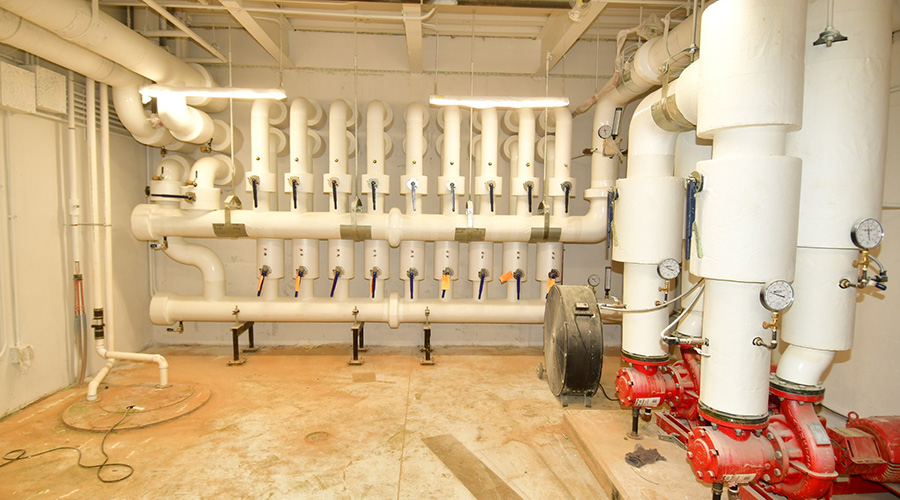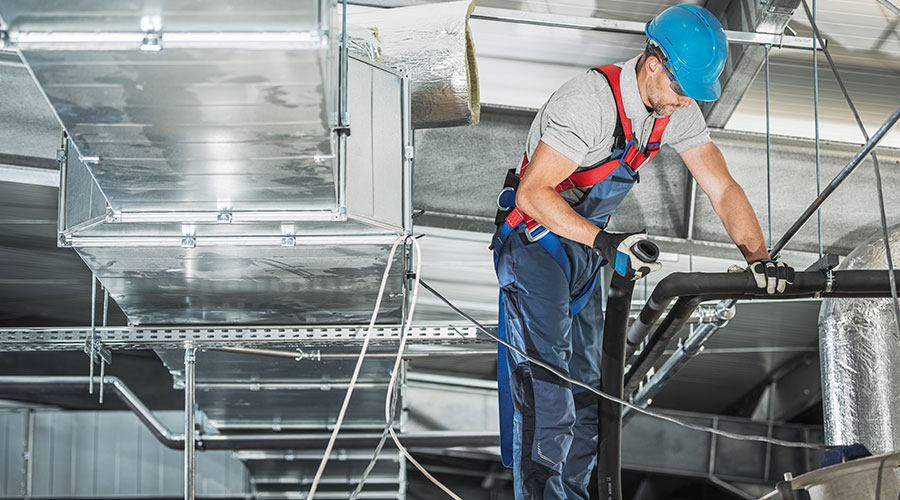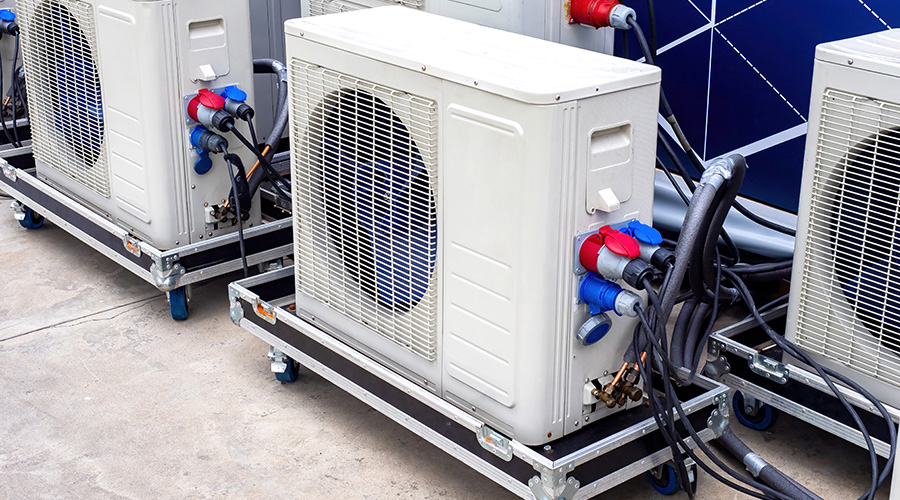HVAC Systems: To Centralize or Decentralize?
Part 2 of a four-part article on best practices for designing HVAC systems.
One key question when integrating HVAC systems is whether to centralize or decentralize mechanical equipment. While there is no right answer to this question, a number of considerations can help make the decision.
The centralization of the HVAC system can be attractive in that it sends the otherwise non-desirable mechanical equipment to the mechanical room or penthouse, away from the adoring public. The downside of doing this is that buildings that have overly large central air handling units (AHU) systems, monolithic boilers, and large single-compressor chillers have a tendency to perform poorly during partial load conditions and off hours. As a reminder, a typical building will operate at part load more than 99 percent of the year.
Instead, the more modular, or decentralized, systems perform better in varied use cases. Decentralization provides the flexibility to operate various portions of the building at different times.
Another benefit to an appropriate amount of modularity — or decentralization — is the level of redundancy it naturally provides. A system that has the ability to take the building down in a single failure is a huge risk to uptime.
Decentralization is easy to overdo as well. For instance, large buildings with many distributed compressors can be a maintenance nightmare. When attempting to reap some of the benefits of modularity, it’s best to consolidate the things that are likely to break, leak, condense, or are expensive to replace, and distribute the other things like AHUs, fans, and terminal devices to give end users control.
Unexpected impacts of codes
While it sounds antithetical, one of the biggest challenges to integrated building design today is the application of current energy codes. As the codes, and therefore the insulating properties of the building envelope, become more and more stringent with each iteration, more moisture problems surface in and around a building. That’s because if the building envelope can’t breathe, moisture that’s on its way out will be trapped inside, creating a ripe opportunity for freeze-thaw damage or mold growth, depending on the climate.
Truly integrated design comes from understanding all the properties of the facility and working together across the entire building team to create the right solution for the facility.
A key aspect to a truly integrated design is facility context. Understanding the programmatic functions of each facility will be important to integrating its design. For example, is the owner of the facility going to be operating the building? Are they planning to sell it in three years, at which time the function may change? Is it a public building? A private building? Does it need a specific level of flexibility?
This is important to know during design because as facility and tenant needs change, HVAC equipment will need to respond accordingly. For example, a new tenant could need more access to outdoor air to exhaust for lab equipment; another may need better filtration, supplemental cooling, etc. — all important considerations when designing an integrated HVAC system.
Truly integrated HVAC system design will have a symbiotic relationship with the building’s other systems, where they complement each other and maybe even become more integrated over time with the addition of new technology and equipment. That’s where design innovation comes into play.
In today’s busy world, some designers are just copying what they did yesterday. It’s easier. And there’s less perceived risk. But there’s also no opportunity for a true symbiotic relationship. To quote the late Sital Daryanani, a trailblazer of integrated design before anyone was doing it, “If I give you a dollar and you give me a dollar, we’ve both gained nothing. But, if I give you an idea and you give me an idea, we’ve both gained everything.”
Here’s to solving the puzzle of HVAC integrated design by applying the right solutions to each unique situation — not just the ones that are the easiest, or simply the most energy efficient.
David P. Callan, P.E., HBDP, LEED AP, is vice president, McGuire Engineers, Chicago, where he leads the high performance buildings practice. He can be reached at DCallan@mepcinc.com.
Email comments and questions to edward.sullivan@tradepress.com.
Related Topics:















